(00:19) Southern Somali and Oromia regions...
(00:23) a hub of Ethiopia's pastoralist economy.
(00:31) Today, many different clan communities peacefully share...
(00:34) the area's natural resources.
(00:41) Communities travel freely to markets and trade openly.
(00:47) Negotiation, cooperation, and mutual aid systems...
(00:50) support their prosperity.
(00:55) But, just three years ago, the need to ensure survival...
(00:58) was manifested in conflict rather than cooperation.
(01:03) Intimidation and violence were common.
(01:06) Markets and key resources were blocked.
(01:09) Lives and livelihoods were devastated.
(01:16) What changed?
(01:18) How did an area of their insecurity...
(01:21) become a place of harmony and cooperation?
(01:24) This is a story of the Negelle peace process.
(01:27) A story of transformation of community divisions...
(01:30) into community collaboration.
(01:33) An example to others of how peace and prosperity can be achieved.
(01:55) The southern territories...
(01:57) of Somali and Oromia regions.
(02:03) Home to four major clans:
(02:05) the Borana, the Geri, the Gebra, and the Guji.
(02:12) Despite their diversity, the clans share a dependency...
(02:16) on the pastoralist livelihood system and the natural environment.
(02:21) Pastoralism is an important part of the Ethiopian economy.
(02:28) Over sixty percent of the country is arid...
(02:30) and semi-arid grassland, appropriate for livestock rearing.
(02:36) Natural resources are scarce and market centers sparse.
(02:43) In the dry season, herders can travel...
(02:45) more than a hundred kilometers to seek...
(02:47) water and pasture for their cattle.
(02:52) At distant towns, they trade their livestock...
(02:54) and livestock products and purchase grains.
(03:00) Survival here is based on mobility: a mobility that requires...
(03:04) freedom of movement, security, and inter-clan collaboration.
(03:09) But, if livelihood pressures get too extreme,...
(03:12) tensions between communities can rise,...
(03:15) threatening this mobility.
(03:18) In recent years, these pressures have increased dramatically.
(03:30) Over the last 25 years, the number of people...
(03:33) living in Ethiopia has almost doubled.
(03:46) Climate change adds to the problem.
(03:53) Droughts are more common and more severe,...
(03:55) their effects further degrading already...
(03:59) heavily grazed pasture and water holes.
(04:05) Dadacha Boru is from the Borana village of Wachile.
(04:09) He has witnessed great changes over his lifetime.
(04:14) We are seeing now that pasture is decreasing
(04:18) We see that the livestock cannot sustain us.
(04:24) In the past, when the cattle gave birth
(04:28) they had a lot of milk.
(04:31) When we killed them they had a lot of meat.
(04:35) Now they have little milk and the meat is lean.
(04:40) We are worried for the future.
(04:44) Pastoralist Shabain Ibrahim, from the Geri village of Hudet,...
(04:48) shares his concern.
(04:50) In the past, there were good rains but now
(04:55) the rains are sporadic.
(04:58) In the past, there were so many cows
(05:00) worked together to form a peace agreement based on customary law.
(05:03) we could live off their milk.
(05:07) But now there are not enough cattle.
(05:12) There is less rain now than in our fathers’ time.
(05:21) As pressure on the environment grows,...
(05:25) ownership of pasture and water points that were once...
(05:27) shared or negotiated, are becoming contested.
(05:35) In 2009, pressures mounted beyond the community's abilities to cope.
(05:48) They then met again to work through the next draft.
(05:48) As a result of the conflict, many lives were lost.
(05:51) Many fled their homes.
(05:55) But, the insecurity that followed,...
(05:57) became a greater challenge to communities.
(06:01) Insecurity reduced mobility.
(06:06) This had a major effect on herd health.
(06:10) Cattle had restricted access to pasture and water and suffered badly.
(06:18) And as travel was no longer safe,...
(06:19) every aspect of life was affected.
(06:25) Aleke Hasen lives in Wachille, one of the communities...
(06:27) at the center of the 2009 conflict.
(06:32) She is responsible for caring for the family's dairy cows...
(06:34) and for collecting firewood and water for the household.
(06:41) During the conflict, she feared leaving the village.
(06:46) When we went to collect firewood we faced
(06:49) two types of conflict.
(06:51) The first was direct fighting.
(06:54) The other was ambush.
(06:59) We feared ambush greatly.
(07:04) Because of this danger we were too frightened
(07:08) to collect wood or water from the local well.
(07:18) The problem didn’t stop there.
(07:22) Aleke earns crucial extra money for the family...
(07:25) by selling milk or homegrown vegetables in the local market.
(07:31) But, in times of conflict, this was not an option.
(07:36) We feared going to market.
(07:40) We feared that the gunmen may attack us
(07:43) and we’d never return to our children.
(07:48) By blocking access to markets,…
(07:51) reduced mobility made a bad situation much worse.
(08:01) We buy most of our food from the market.
(08:05) If we cannot trade there we cannot survive.
(08:10) We go hungry, we can’t buy clothes.
(08:14) Even if we have money, we cannot spend it.
(08:22) And without traders, markets wither.
(08:25) Following the conflict in 2009,...
(08:27) the area's markets stopped functioning.
(08:33) During the conflict cattle were not coming here.
(08:38) People wanted to trade their animals
(08:41) but they were afraid to come.
(08:45) In 2009, whole communities lost their wealth.
(08:49) Unable to care for their cattle or sell them in markets,...
(08:53) they were forced to adopt extreme survival strategies,...
(08:57) culling their herds or selling their cows at a loss through third parties.
(09:02) Because they could not travel safely,...
(09:04) they lost wealth accumulated over generations.
(09:09) I lost a huge number of cattle.
(09:13) I lost twelve through raiding
(09:16) and many more through other causes.
(09:20) I lost all the cattle I had.
(09:26) Because of this I lost all hope.
(09:30) I became depressed and sat at home.
(09:36) Despite plenty of grass and water, cattle died.
(09:39) Despite food in the market, people died.
(09:42) There was water but people died of thirst.
(09:46) Everywhere there was conflict.
(09:49) Everyone was frightened.
(09:50) It was a terrible situation.
(09:55) Addressing both the causes and consequences...
(09:58) of this problem was not simple.
(09:59) Over the last few decades, modernization and the improved reach of state justice...
(10:04) had worked systematically to tackle clan disputes.
(10:09) But, there were challenges when the new system had to integrate with the old.
(10:15) When this crisis occurred, the government
(10:19) intervened directly, rather than using
(10:25) the cultural clan system.
(10:30) In parallel, clan leaders and elders attempted
(10:35) to resolve some issues by calling for the return
(10:41) of looted cattle to try to calm tensions.
(10:47) But it was not working.
(10:52) When the government came in to settle
(10:57) the dispute, some of the guilty were still free.
(11:02) Hidden and unpunished by their clans.
(11:05) What could we do about this?
(11:08) The government set up temporary courts.
(11:12) to dispense state justice.
(11:16) But after one or two months
(11:21) the conflict erupted again.
(11:25) There was no sustainable peace.
(11:28) The events of 2009 demonstrated the challenges of establishing peace in the area.
(11:34) A new approach was needed.
(11:40) In May 2009, work began on what became known as the Negelle peace process.
(11:47) The process started with the support of the regional governments.
(11:52) Our government wanted to solve this conflict.
(11:55) and strengthen relationships
(11:59) between bordering communities.
(12:03) As Ethiopia has a federal style of government,
(12:07) bordering communities must respect each other
(12:11) and live together peacefully.
(12:15) This government is committed to this.
(12:21) The government saw clearly that the inter-relationships of the clans...
(12:24) were not just the source of the problem,...
(12:26) but the keys to the solution.
(12:32) It was clear this surface violence was
(12:35) a manifestation of many deep rooted disputes.
(12:38) To solve the conflict it would be necessary to
(12:42) discover and uproot these underlying causes.
(12:45) Within months, with the help of government,...
(12:48) local and regional clan leaders initiated a peace process.
(12:53) The project was funded by USAID...
(12:55) and all parties were assisted by the international NGO, Mercy Corps.
(13:01) I think we have to say from the beginning that it was very much...
(13:04) a government-led and a community-run process.
(13:08) However, our role was critical in, I think,...
(13:11) supporting those actors to actually achieve the goals...
(13:16) that they wanted from that process.
(13:20) The objective was to reinvigorate existing customary law.
(13:24) These agreements would cover major inter-clan issues,...
(13:27) punishments for criminal acts,...
(13:29) how to deal with cattle rustling, and crucially...
(13:32) how to manage and share access to limited natural resources.
(13:37) These agreements would have to be ones that everyone could accept,...
(13:41) and that could be implemented successfully at the local level.
(13:46) But, if this process was to work, it would require the buy-in...
(13:49) of the local clan elders.
(13:53) Elders are the decisive voices
(13:55) in pastoral communities.
(13:57) The keys to minimizing, preventing
(13:58) and resolving conflicts.
(14:01) Without their consent, no progress can be made.
(14:06) But engaging elders would mean overcoming grievance and prejudice.
(14:12) Before dialogue could begin, the parties...
(14:14) were introduced to new methods of negotiation and engagement.
(14:18) Mercy Corps has very good experience...
(14:22) in providing negotiation mediation training and skills internationally.
(14:27) However, I think the added value that we were able to bring...
(14:31) is to be able to contextualize that training package...
(14:34) and those skills so they were most effectively used and applied...
(14:38) to the context of these pastoralist communities...
(14:40) who were facing those challenges at that time.
(14:45) The approach used a set of internationally successful techniques...
(14:48) for training and facilitating dialogue and negotiation.
(14:52) One of the key objectives was to change perceptions about the conflict.
(14:56) For this, Mercy Corps utilized visual aids to spread the message clearly.
(15:01) An example was the problem tree.
(15:05) The image of a tree represents a conflict.
(15:07) The trunk is the core problem of conflict, the leaves and branches its effects.
(15:12) But the hidden roots are the underlying causes.
(15:15) Only by finding and examining the causes,...
(15:19) can the growth of the conflict be understood.
(15:23) They called us to a meeting.
(15:26) They explained to us the benefits of peace.
(15:29) They told us how conflict starts, and where its
(15:30) roots lie. They gave examples.
(15:33) They showed us the problem tree picture and
(15:35) taught us the causes and effects of the conflict.
(15:38) The major problems and the minor problems
(15:41) and how they could be solved.
(15:44) We learned a great amount from this.
(15:50) When the time was right, a series of meetings were organized...
(15:52) where members of opposing clans were brought together.
(16:15) It is not easy at the beginning.
(16:16) It needs, you know, a careful design of decision itself.
(16:21) You can see the anger on the face of everyone in that room.
(16:26) To help overcome this animosity,
(16:28) the facilitators brought communities together in group activities...
(16:31) to encourage face to face interaction.
(16:36) The elders learned a lot. The more they interact, the more they listen to each other,...
(16:41) the more they avoid fearing each other.
(16:46) Then, during tea break and during the discussion,...
(16:49) they will start having side corner discussion there.
(16:54) Well, yesterday we are fighting.
(16:59) When you make people to interact, interaction itself is teaching.
(17:04) But, it was recognized the opinions of elders alone...
(17:10) could not change attitudes and behavior toward other clans.
(17:13) The input and acceptance by the wider community...
(17:16) would be crucial to the success of the peace.
(17:20) Two community groups were seen as particularly important.
(17:24) The first was youth.
(17:29) Youth are, they are on the front line.
(17:33) They are the one who clashes with you and with the other group.
(17:36) They are the one who exercise the actual fight.
(17:44) They feel is is something they need to do for their clan.
(17:48) So including them, changing that mentality attitude
(17:51) toward fighting was important.
(17:58) Youth groups were formed and they were given education...
(17:59) on the consequences of fighting.
(18:06) I learned that killing has terrible consequences.
(18:12) I learned how destructive conflict can be
(18:17) and how constructive peace can be.
(18:22) I learned that war is very damaging
(18:27) and it only brings death.







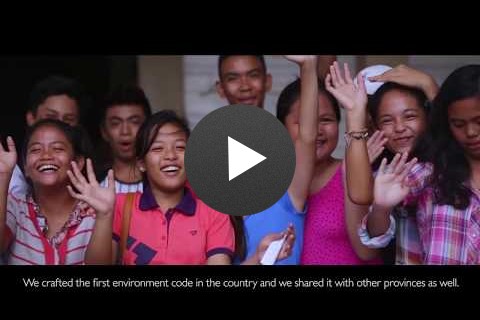

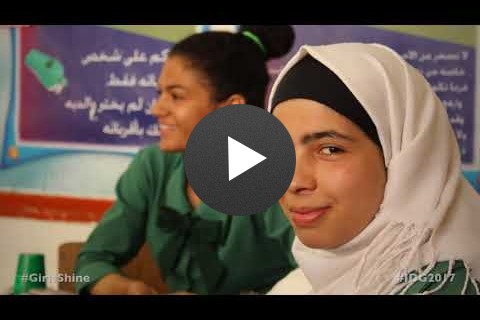

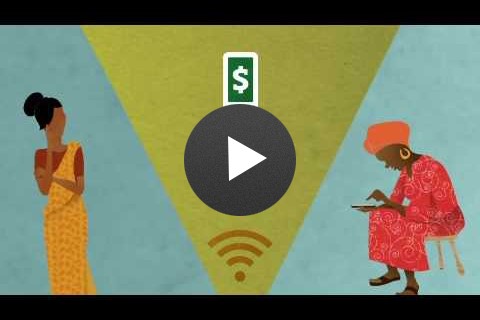
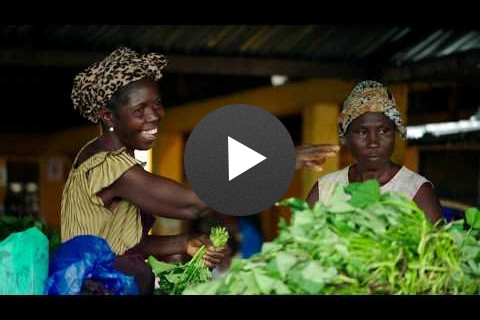
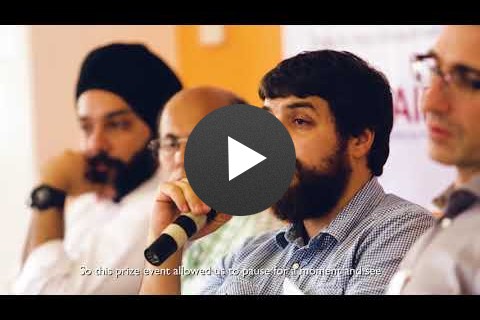
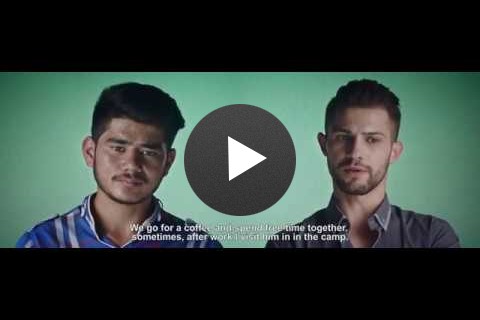
Comment
Make a general inquiry or suggest an improvement.